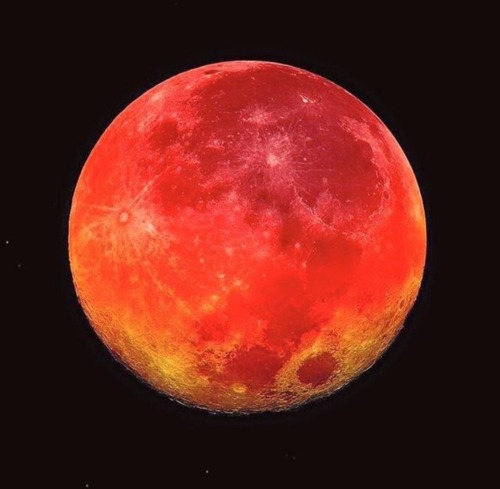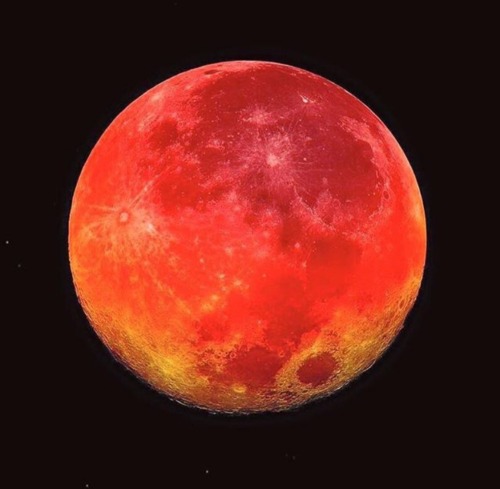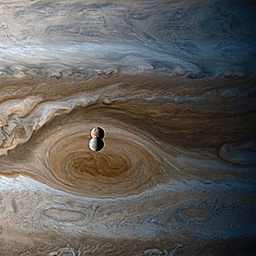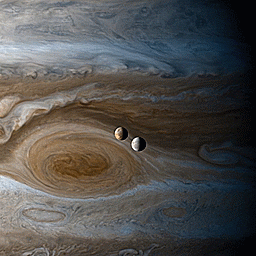The Stellar Buddy System
The Stellar Buddy System
Our Sun has an entourage of planets, moons, and smaller objects to keep it company as it traverses the galaxy. But it’s still lonely compared to many of the other stars out there, which often come in pairs. These cosmic couples, called binary stars, are very important in astronomy because they can easily reveal things that are much harder to learn from stars that are on their own. And some of them could even host habitable planets!

The birth of a stellar duo
New stars emerge from swirling clouds of gas and dust that are peppered throughout the galaxy. Scientists still aren’t sure about all the details, but turbulence deep within these clouds may give rise to knots that are denser than their surroundings. The knots have stronger gravity, so they can pull in more material and the cloud may begin to collapse.
The material at the center heats up. Known as a protostar, it is this hot core that will one day become a star. Sometimes these spinning clouds of collapsing gas and dust may break up into two, three, or even more blobs that eventually become stars. That would explain why the majority of the stars in the Milky Way are born with at least one sibling.
Seeing stars

We can’t always tell if we’re looking at binary stars using just our eyes. They’re often so close together in the sky that we see them as a single star. For example, Sirius, the brightest star we can see at night, is actually a binary system (see if you can spot both stars in the photo above). But no one knew that until the 1800s.
Precise observations showed that Sirius was swaying back and forth like it was at a middle school dance. In 1862, astronomer Alvan Graham Clark used a telescope to see that Sirius is actually two stars that orbit each other.

But even through our most powerful telescopes, some binary systems still masquerade as a single star. Fortunately there are a couple of tricks we can use to spot these pairs too.
Since binary stars orbit each other, there’s a chance that we’ll see some stars moving toward and away from us as they go around each other. We just need to have an edge-on view of their orbits. Astronomers can detect this movement because it changes the color of the star’s light – a phenomenon known as the Doppler effect.

Stars we can find this way are called spectroscopic binaries because we have to look at their spectra, which are basically charts or graphs that show the intensity of light being emitted over a range of energies. We can spot these star pairs because light travels in waves. When a star moves toward us, the waves of its light arrive closer together, which makes its light bluer. When a star moves away, the waves are lengthened, reddening its light.

Sometimes we can see binary stars when one of the stars moves in front of the other. Astronomers find these systems, called eclipsing binaries, by measuring the amount of light coming from stars over time. We receive less light than usual when the stars pass in front of each other, because the one in front will block some of the farther star’s light.
Sibling rivalry
Twin stars don’t always get along with each other – their relationship may be explosive! Type Ia supernovae happen in some binary systems in which a white dwarf – the small, hot core left over when a Sun-like star runs out of fuel and ejects its outer layers – is stealing material away from its companion star. This results in a runaway reaction that ultimately detonates the thieving star. The same type of explosion may also happen when two white dwarfs spiral toward each other and collide. Yikes!

Scientists know how to determine how bright these explosions should truly be at their peak, making Type Ia supernovae so-called standard candles. That means astronomers can determine how far away they are by seeing how bright they look from Earth. The farther they are, the dimmer they appear. Astronomers can also look at the wavelengths of light coming from the supernovae to find out how fast the dying stars are moving away from us.
Studying these supernovae led to the discovery that the expansion of the universe is speeding up. Our Nancy Grace Roman Space Telescope will scan the skies for these exploding stars when it launches in the mid-2020s to help us figure out what’s causing the expansion to accelerate – a mystery known as dark energy.

Spilling stellar secrets
Astronomers like finding binary systems because it’s a lot easier to learn more about stars that are in pairs than ones that are on their own. That’s because the stars affect each other in ways we can measure. For example, by paying attention to how the stars orbit each other, we can determine how massive they are. Since heavier stars burn hotter and use up their fuel more quickly than lighter ones, knowing a star’s mass reveals other interesting things too.
By studying how the light changes in eclipsing binaries when the stars cross in front of each other, we can learn even more! We can figure out their sizes, masses, how fast they’re each spinning, how hot they are, and even how far away they are. All of that helps us understand more about the universe.
Tatooine worlds

Thanks to observatories such as our Kepler Space Telescope, we know that worlds like Luke Skywalker’s home planet Tatooine in “Star Wars” exist in real life. And if a planet orbits at the right distance from the two stars, it could even be habitable (and stay that way for a long time).
In 2019, our Transiting Exoplanet Survey Satellite (TESS) found a planet, known as TOI-1338 b, orbiting a pair of stars. These worlds are tricker to find than planets with only one host star, but TESS is expected to find several more!
Want to learn more about the relationships between stellar couples? Check out this Tumblr post: https://nasa.tumblr.com/post/190824389279/cosmic-couples-and-devastating-breakups
Make sure to follow us on Tumblr for your regular dose of space: http://nasa.tumblr.com
More Posts from Starry-shores and Others
QUETZALCOATLUS

Quetzalcoatlus goes down in history as the largest flying organism of all time, with a wingspan of 12 metres, which is larger than some planes. Quetzalcoatlus was the undisputed king of the Late cretaceous skies, so it seems fitting that its name is derived from an Aztec god, Quetzalcoatl. Although its wingspan is impressive, Quetzalcoatlus also had a huge 2.5 metre long skull, that is the average height of an Asian elephant! To get such a huge animal in the air, a complex system of air sacs was needed inside the bones, this meant that Quetzalcoatlus probably weighed no more than 250kg. Quetzalcoatlus, along with many pterosaurs, was originally thought to spend most of its time gliding over the oceans, skimming fish out from the surface of the water with their elongated beaks. However, due to the skull and beak morphology and the presence of fossils far inland it has become more widely accepted that Quetzalcoatlus stalked prey far below on the land. The fore and hind limb morphology of Quetzalcoatlus also suggests that they were competent walkers on the land, they would have stood up to 3 metres tall.

The feeding habits of Quetzalcoatlus still remain something of a mystery. It was originally thought to be more of a scavenger, but the blunt beak was unsuited to stripping and picking flesh of a bony creature. It is more likely that Quetzalcoatlus hunted like modern-day storks, stalking the land from the skies above for smaller animals and then swooping down to eat them whole.

Dusty Stars Of Orion


Look at the bottom gif! The long tentacles are pushed out and parallel to each other while the jelly is motionless. This behavior is predatory, which means that the Marianas Trench Jelly is set in attack mode!
Read more about the 2016 discovery of the Marianas Trench Jelly



“You’re basically seeing all of the sunrises and sunsets across the world, at once, being reflected off the surface of the moon” – NASA


Sea of Stars, Vaadhoo Island, Maldives by Doug Perrine

The Most Hardcore Period in Earth’s History, or the Permian, was preceded by a complete ecosystem collapse, and featured three different major mass extinction events - including the largest in earth’s history, the Great Dying, which lead to nearly all life on earth dying out.
During the Permian, all the land on Earth was in one supercontinent, called Pangea; and all the water was in one ocean, called Panthalassa. This meant that life intermingled and expanded all over the world, more so than it was able to in other periods (besides the Triassic, which also featured a single continent and a single ocean).

Pangea, and the Permian, was characterized by extremes. The beginning of the Period featured the end of the Karoo Ice Age - the poles were filled with ice caps, the center of the continent was dry, and temperature extremes were found throughout the land and ocean. The end featured multiple mass extinctions and a rapid warming of the continent, reaching the extreme heat of the Triassic period.

By @franzanth
The Carboniferous Rainforest Collapse was primarily caused by an intensification of that ice age - leading to the start of the Permian featuring dry, harsh, extreme climates. This time period featured the rapid diversification and specialization of some of the earliest animals adapted for a dry existence - prior to now, life almost entirely existed in the oceans, or in the forested and swampy world of the Carboniferous. This was the first truly dry time for (at least some) life.

By @alphynix
Olson’s Extinction marked a change from that initial habitat in the Cisuralian epoch to the next, the Guadalupian. As the world began to rapidly warm after the Karoo Ice Age ended, this lead to a major extinction of plants and vertebrates especially. The vertebrates would not fully recover before the Triassic; however, it did lead to many new forms, especially among synapsids, appearing in the new vacant environmental roles.

(By @paleoart)
The Capitanian Extinction was caused by the explosion of a moderately sized laval flow system, the Emeishan Traps, which lead to immediate global cooling followed by rapid global warming. This greatly affected ocean chemistry, making it far more acidic than previously. Many reef animals were killed by this extinction, in addition to brachiopods; many vertebrates were also affected.

(By @paleoart)
So the Permian was a hard, broken world when the Siberian Traps - one of the largest lava flows in Earth’s History, and one of the largest volcanic events known - exploded, leading to even more dramatic climate change and extremely rapid global warming. This lead to acidification of the ocean’s and a dramatic drop in ocean oxygen. Almost every group of organisms was dramatically affected, and this extinction was the largest known in Earth’s History, with between 85-96% of life on Earth dying out (and some researchers thinking it may have even been higher), leading to this extinction being dubbed The Great Dying. Many groups utterly disappeared, despite having been features of the entire Paleozoic Eon (the eon that the Permian was at the end of) - trilobites, eurypterids, “spiny sharks”, tabulate and rugose corals, and blastoids complete disappeared, as did many other groups. Brachiopods, Gastropods, Ammonites, Radiolarians, Foraminiferans, Crinoids, and most Parareptiles also went extinct, as did many synapsids and amphibians. It was an utter catastrophe.

(By @paleoart)
The Permian was a time of extensive hardship, dramatic changes, and extinction event after extinction event. Life was truly on the brink - just as it was beginning to settle into terrestrial existence. So new animals, from insects to amniotes to conifers, spent their school years in a prehistoric hunger games - and only a few species managed to reach the weirdness kiln of the Triassic.
Welcome to the Permian.
The Most Hardcore Period of Earth’s History.
-
 fandomxo reblogged this · 3 months ago
fandomxo reblogged this · 3 months ago -
 beefrobeefcal reblogged this · 5 months ago
beefrobeefcal reblogged this · 5 months ago -
 icnakedpeople reblogged this · 7 months ago
icnakedpeople reblogged this · 7 months ago -
 captainsingleton reblogged this · 8 months ago
captainsingleton reblogged this · 8 months ago -
 galerymod reblogged this · 9 months ago
galerymod reblogged this · 9 months ago -
 gahl-lak-tus reblogged this · 9 months ago
gahl-lak-tus reblogged this · 9 months ago -
 planetofsnarfs reblogged this · 9 months ago
planetofsnarfs reblogged this · 9 months ago -
 corrienteallita reblogged this · 10 months ago
corrienteallita reblogged this · 10 months ago -
 sepherinaspoppies reblogged this · 11 months ago
sepherinaspoppies reblogged this · 11 months ago -
 wondernoise liked this · 11 months ago
wondernoise liked this · 11 months ago -
 ranatalus reblogged this · 11 months ago
ranatalus reblogged this · 11 months ago -
 b0ggyb1tch reblogged this · 1 year ago
b0ggyb1tch reblogged this · 1 year ago -
 copaline reblogged this · 1 year ago
copaline reblogged this · 1 year ago -
 cosyefficient liked this · 1 year ago
cosyefficient liked this · 1 year ago -
 belgarath69 reblogged this · 1 year ago
belgarath69 reblogged this · 1 year ago -
 archival-slime liked this · 1 year ago
archival-slime liked this · 1 year ago -
 icanttypo liked this · 1 year ago
icanttypo liked this · 1 year ago -
 apolladay reblogged this · 1 year ago
apolladay reblogged this · 1 year ago -
 skskskimmilk reblogged this · 1 year ago
skskskimmilk reblogged this · 1 year ago -
 227772 reblogged this · 1 year ago
227772 reblogged this · 1 year ago -
 ayeznevaclose reblogged this · 1 year ago
ayeznevaclose reblogged this · 1 year ago -
 amagnificentobsession reblogged this · 1 year ago
amagnificentobsession reblogged this · 1 year ago -
 sp00kymulderr reblogged this · 1 year ago
sp00kymulderr reblogged this · 1 year ago -
 thebeesareback reblogged this · 1 year ago
thebeesareback reblogged this · 1 year ago -
 perditaalottachocolate-blog reblogged this · 1 year ago
perditaalottachocolate-blog reblogged this · 1 year ago -
 maddy44 reblogged this · 1 year ago
maddy44 reblogged this · 1 year ago -
 luna3371 liked this · 1 year ago
luna3371 liked this · 1 year ago -
 goopylittleghosty liked this · 1 year ago
goopylittleghosty liked this · 1 year ago -
 republicbharat reblogged this · 1 year ago
republicbharat reblogged this · 1 year ago -
 nerdybirdie13 liked this · 2 years ago
nerdybirdie13 liked this · 2 years ago -
 aspergers1044 liked this · 2 years ago
aspergers1044 liked this · 2 years ago -
 soundwae liked this · 2 years ago
soundwae liked this · 2 years ago -
 universalisartdesign liked this · 2 years ago
universalisartdesign liked this · 2 years ago -
 mitsukenaide-mitsumenaide liked this · 2 years ago
mitsukenaide-mitsumenaide liked this · 2 years ago -
 ladyv-aka-via liked this · 2 years ago
ladyv-aka-via liked this · 2 years ago -
 veritasestsumma reblogged this · 2 years ago
veritasestsumma reblogged this · 2 years ago -
 adream2me liked this · 2 years ago
adream2me liked this · 2 years ago -
 hermes-stropheus reblogged this · 2 years ago
hermes-stropheus reblogged this · 2 years ago -
 blue-wolf-seeker liked this · 2 years ago
blue-wolf-seeker liked this · 2 years ago -
 i-will-always-love-the-jedi liked this · 2 years ago
i-will-always-love-the-jedi liked this · 2 years ago -
 sonnetimo liked this · 2 years ago
sonnetimo liked this · 2 years ago -
 solitudetoherloneliness liked this · 2 years ago
solitudetoherloneliness liked this · 2 years ago -
 melocosmos liked this · 2 years ago
melocosmos liked this · 2 years ago

Amateur astronomer, owns a telescope. This is a side blog to satiate my science-y cravings! I haven't yet mustered the courage to put up my personal astro-stuff here. Main blog : @an-abyss-called-life
212 posts











